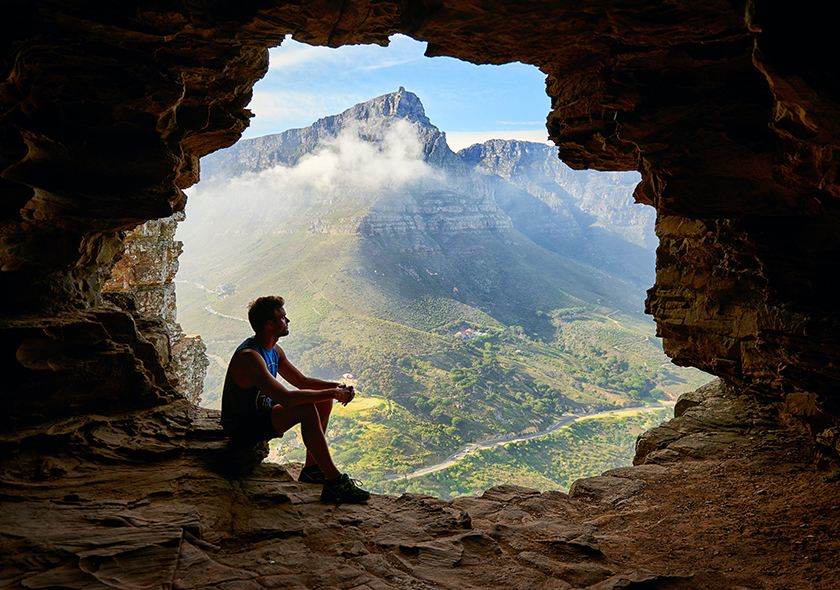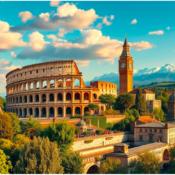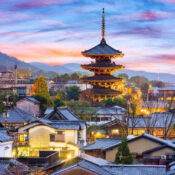13 Best Amazing Lakes To Explore in Italy
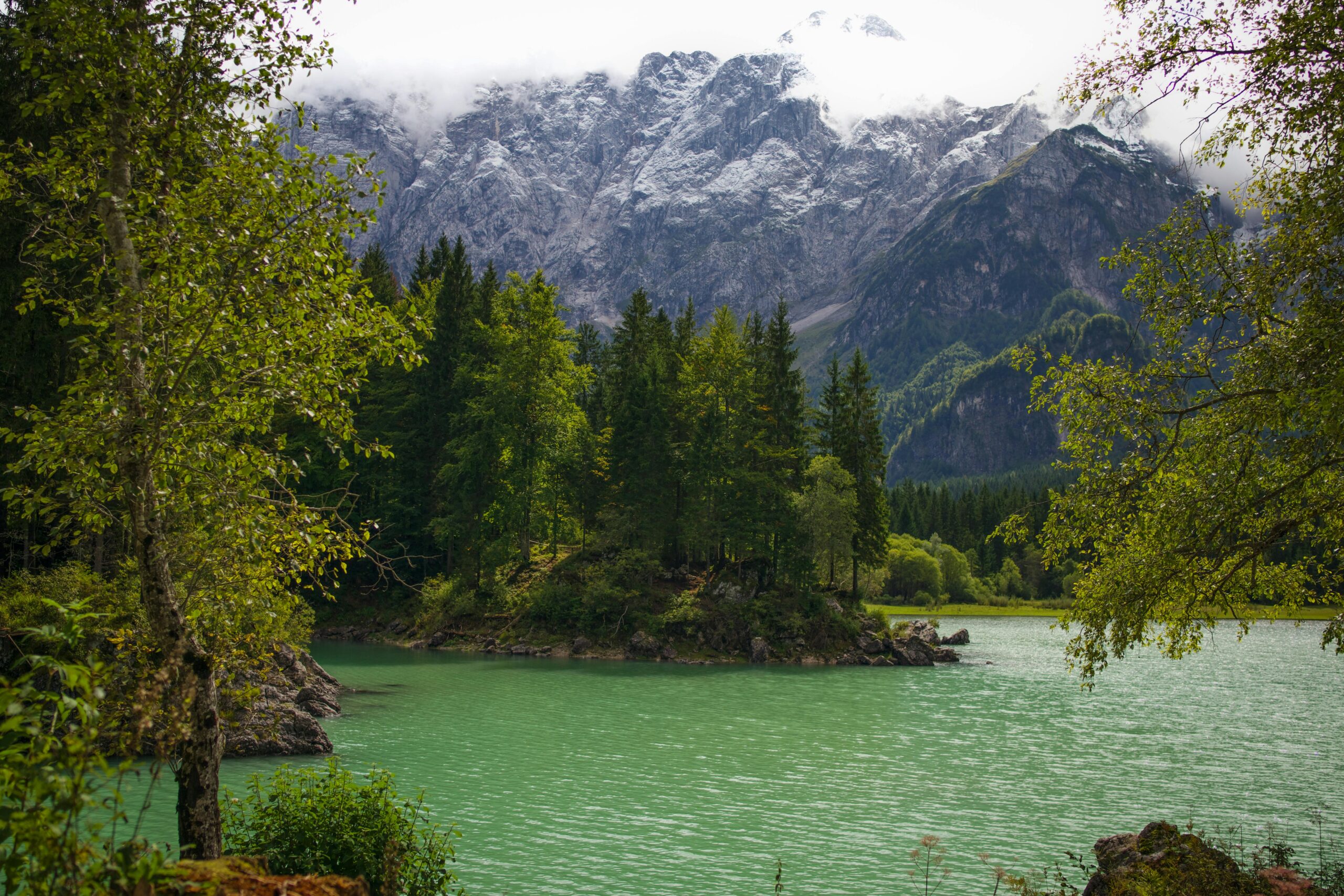
13 Best Amazing Lakes To Explore in Italy
Italy is home to about 1,500 lakes. Ranging from the three large lakes and Alpine ponds in the north to the lone natural lake of Calabria. Lies at an elevation of 1,040 meters in the Catena Costiera foothills. The Northern lakes consistently receive the most attention because of their size: Garda is the largest, covering 370 square kilometers, while Como is the deepest, at 410 meters. The second largest is Maggiore, whose northern waters extend into Switzerland’s Ticino area.
These lakes well-liked holiday spots for both locals and visitors. And nearly all of them are hubs for water sports including swimming, sailing, fishing, canoeing, kayaking, water skiing, and even scuba diving. Lake Garda is well-known for its amusement parks along its southern shore. And most have hotels and resorts overlooking them and in the surrounding towns.
It’s simple to think of Italy’s lakes as playgrounds. But don’t miss the numerous popular tourist destinations that border their edges. The breathtaking landscape that surrounds the northern lakes. Explore the magnificent palaces, Art Nouveau homes, Roman ruins, ancient churches, and verdant gardens located here. Explore the ruins of an ancient lake hamlet in Lake Ledro.
Hikers can access breathtaking vistas and strenuous via ferrates by trails, and Alpine gardens can reached by mountain cable cars. You can take boats to islands, such as the biggest lake island in Europe. and ascend the UNESCO-recognized Sacra Monte, or Sacred Mountain. Nestled in an ancient caldera to the south, the largest volcanic lake in Europe. Lake Bolsena is an excellent place to go birdwatching.
There are lots of activities to see and do at the top lakes in Italy. Whether you select the glamour of Lake Como, the playground of Garda, or the picturesque view from Lago Blu. This helpful guide will help you make your decision.
Best Lakes to Visit in Italy
Below are the best lakes:
1. Lake Como,Italy:
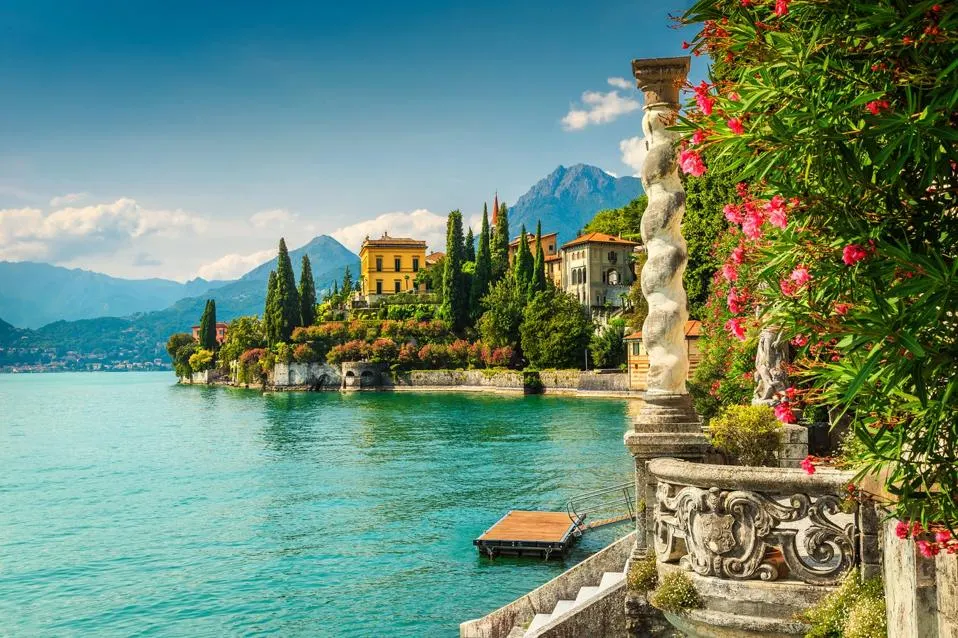
From Roman times, when Pliny constructed his palace on its eastern bank. Glitzy Como has been the cover girl of the Italian lakes. The place where the privileged came to frolic. Hollywood celebrities have been selecting it as a bolt hole in more recent times. Como is a long, narrow lake that splits into two arms in the south, resembling an inverted Y, with the upscale town of Bellagio at its center.
Located near the lake and connected to Milan via train, Como was once a Roman city. Its main draws are a stunning Romanesque cathedral and a cable car that climbs to provide views of the lake and the snow-capped Alps in the distance.
You can take a boat from Como to its cities or for a beautiful lake cruise. It’s simple to move around without a car because ferries travel back and forth between Bellagio, Tremezzo, and other towns.
Highlights include the two beautiful gardens in Bellagio, the gardens of Villa Carlotta in Tremezzo. The terraced gardens of Villa Monastero in Varenna. And the Baroque Villa Balbianello on its garden-clad point, which is reachable by boat from Lenno. The “lake effect” renders Como’s shores ideal for temperate and even semitropical plants. The nicest places to visit in Lake Como these flower-filled settings backed by the lake and the Alps.
2. Lake Garda:
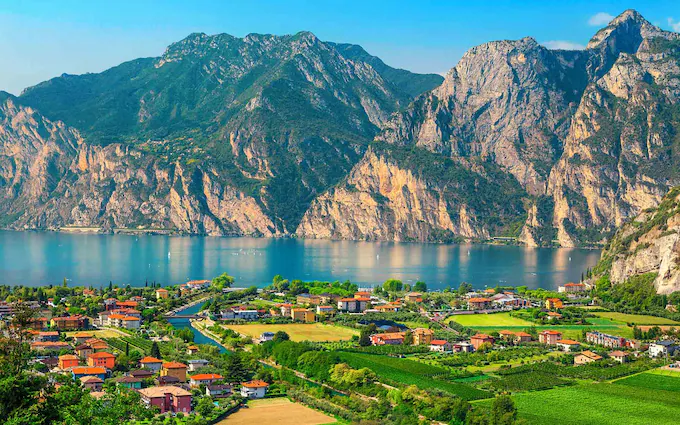
Garda is most famous for being the playground lake, even though its northern sections are equally stunning as Lake Como. Nearly every freshwater sport is available here. And at its northernmost point, Torbole provides some of Europe’s best windsurfing and kitesurfing. The lake’s calmer southern waters are popular for kayaking, but the winds also make it a favorite for sailing.
The southern portion of the lake has most of the nicest beaches. While hikers can find paths of varying degrees of difficulty in the nearby mountains. Travelers who wish to see the mountains without having to hike uphill can ride the spinning cable car to the top of Monte Baldo. And stroll the ridge’s trails, which lead to an alpine botanic garden.
Families enjoy Garda because of its laid-back atmosphere, its shallow beaches. The abundance of family-friendly resorts and campgrounds, and its beloved theme parks. The most well-known of these are Caneva World, with its attractions based on movies, Gardaland, and Gardaland Sea-Life.
Children especially adore the castle in Sirmione, a small village on the southern shore that sits at the tip of a long peninsula. Large remnants of a lavish Roman bath and resort can seen in Sirmione, which is also a well-liked destination for shoppers due to its abundance of small stores and boutiques.
3. Lake Maggiore:
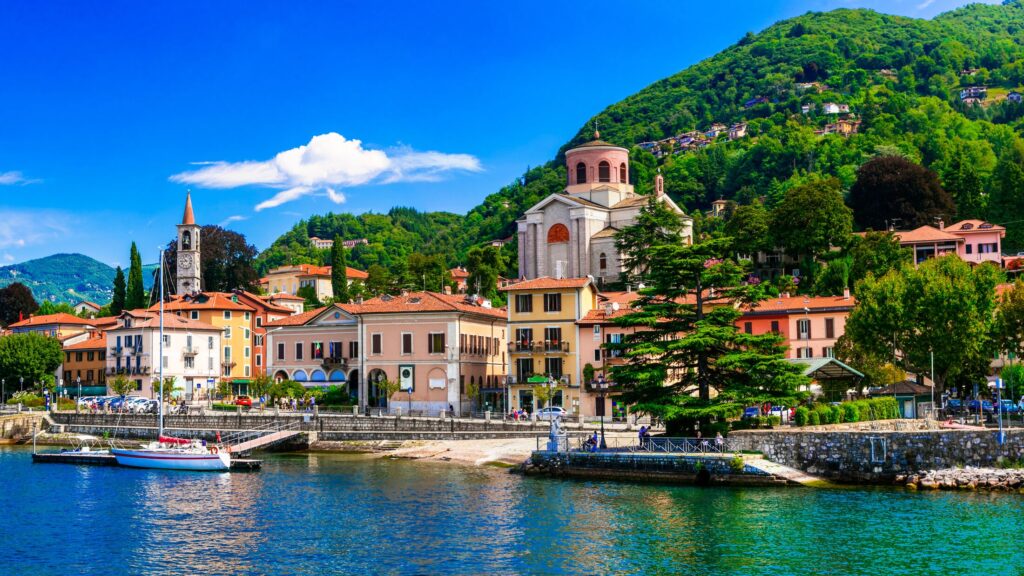
Ascona and Locarno, the northernmost towns in Italy, are in the Swiss Ticino area. Maggiore, the second largest lake in Italy, shared with Switzerland. However, most of the lake, which is home to Maggiore’s best attractions, is in Italy. The lower end of the lake is only a few kilometers from Malpensa airport, and towns along its western bank are accessible by direct train from Milan.
The western side is home to most of the important attractions, including the beautiful subtropical gardens and park of Villa Taranto and Villa Pallavicino. The latter is a family favorite activity on Lake Maggiore because it features a zoo with exotic animals, as well as botanical and exhibition gardens.
Popular base, stylish Stresa is where boats depart to visit the three Borromean Islands. While there is charm on all the islands, Rocca Borromeo, the extravagant palace on Isola Bella, is the main draw. Most of the island covered with its opulent, gold-plated salons and halls, but the formal garden, which is even more magnificent, is the tour’s high point, rising layer after tier above the lake.
Compared to Lake Garda, Maggiore has fewer beaches, however some villages lend out kayaks and canoes. Take a lake steamer tour for the best views of the constantly shifting mountains to the north, Angera Castle, and lakefront villas.
4. Lake Orta,Italy:
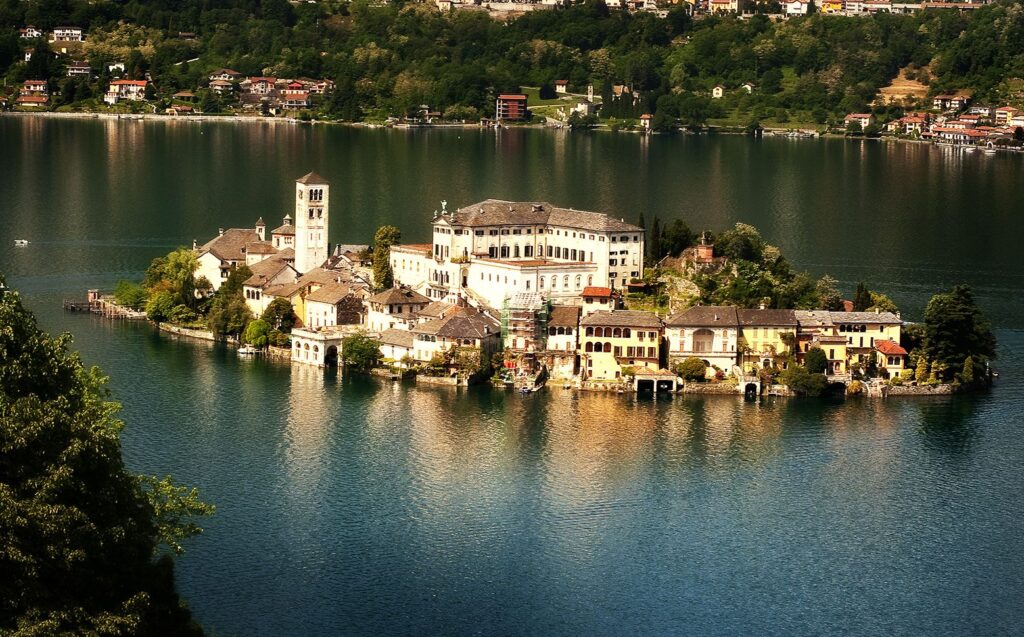
Though just a short drive from Lake Maggiore, Orta is by far the most romantic lake in Italy and often missed. Little Lake Orta tucked away in a valley behind the forested western slopes of Monte Mottarone. From the hamlet of Orta San Guilio, a tiny island called Isola San Giulio can reached by boat.
The stone structures of a monastery and the 12th-century Basilica di San Giulio, which claimed to have constructed by the saint himself, span almost the whole island. The frescoes and the elaborately carved marble pulpit are the church’s highlights. The Way of Silence winds beneath the convent’s walls and between its historic structures.
Charming medieval roads wind through Orta San Giulio as it extends out along the lakeside and ascends the mountainside. Its main street is narrow, with little stores lining it. Piazza Motta is where you can get a boat to the island.
Above the village, paths meander among the chapels of the Sacra Monte, one of nine such hillside sanctuaries unique to this region.Terra-cotta statues depicting episodes in the life of St. Francis of Assisi housed in twenty chapels.
5. Lake Lugano:
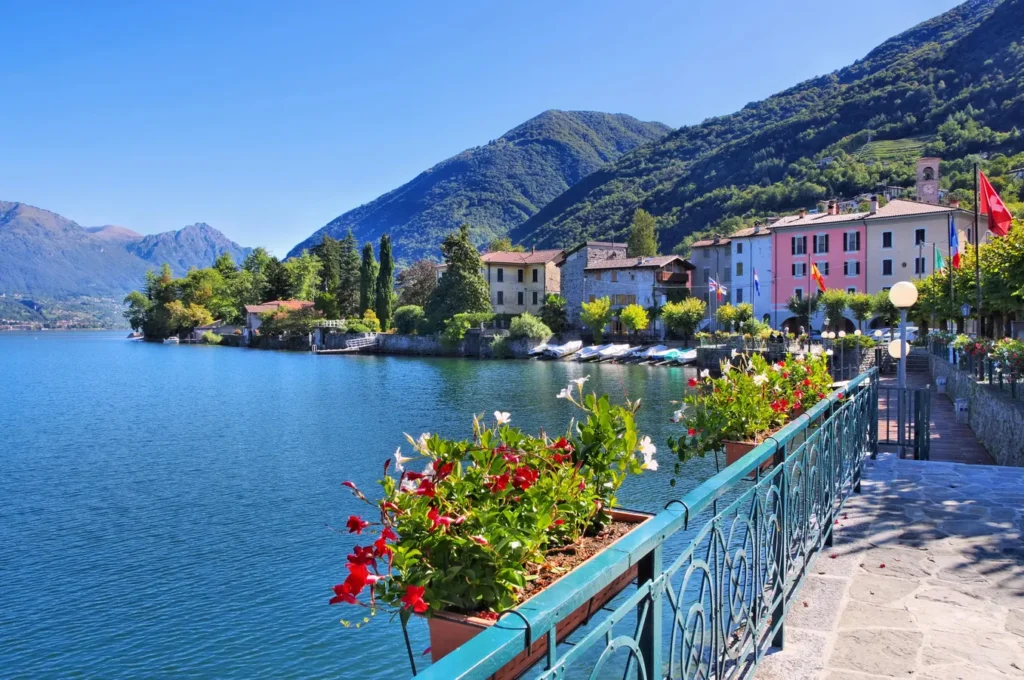
Due to peculiarities in history and geography, the entirety of Lake Lugano is in the Italian-speaking Ticino region of Switzerland. Except for a small, isolated section near the center. The only significant settlements are Lugano in Switzerland and Porlezza in Italy at the far eastern extremity, save from a few villages that cling to its shore. Somewhere else, the shoreline is steep, rocky, and densely wooded; the mountains that make up a striking backdrop accentuate the lake’s tranquil, untamed atmosphere.
You can travel from Menaggio to Porlezza, which is located at the Italian end of Lake Lugano, or, for a truly adventurous experience, follow the roads that cross the Alps from Argegno, which is located on Lake Como, to Osteno, which is located on Lake Lugano. You don’t have to go back from here because a road hugs the lakeside all the way to Porlezza. You’ll pass the Grotte di Rescia caverns along the coast.
Porlezza is a well-liked destination for families because of its excellent selection of campsites and swimming beach. You can rent boats in Cima, close to Porlezza, and go around the lake independently, or you can take a popular steamer from Lugano and tour the lake.
6. Lake Iseo:
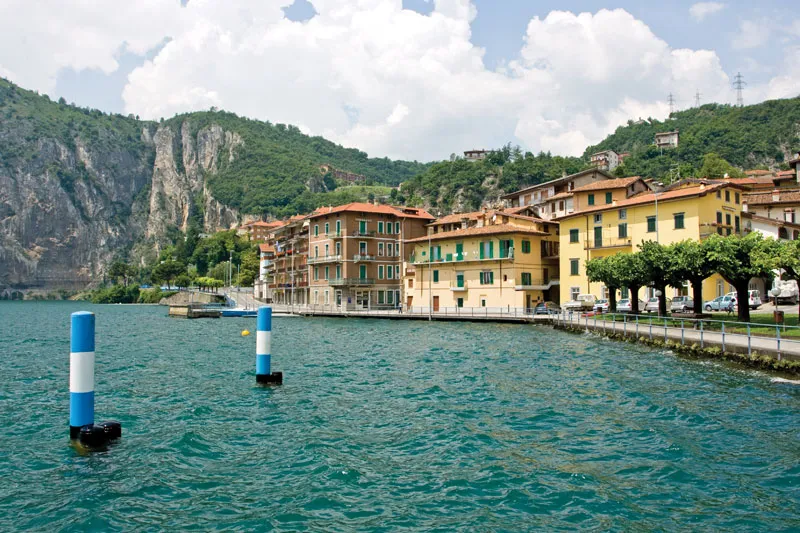
Like Lake Orta, Iseo frequently disregarded due to its location between and prominence over the more well-known and larger lakes, Garda and Como. With mountains all around it, Iseo particularly well-liked for water sports including wakeboarding, sailing, windsurfing, kitesurfing, and paragliding.
In the little port of Iseo, laid-back lakeside villages provide a variety of tourist amenities and sites, such as a medieval church and a modest castle from the 12th century. The sole island in the Alpine Lake rises sharply amid the wooded slopes of Monte Isola near the town of Sulzano. At the top of the mountain, at a height of more than 600 meters, sits the Madonna della Ceriola pilgrimage church. You arrive at the small island fishing community of Peschiera Maraglio by ferry from Sulzano.
7. Pragser Wildsee:
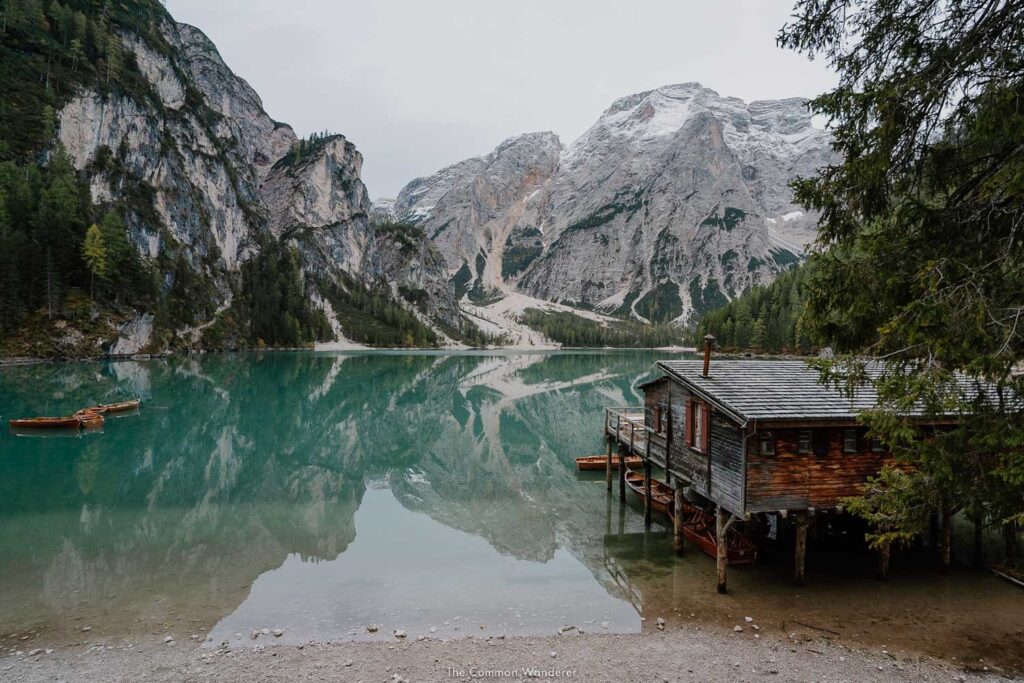
Pragser Wildsee, also known as Lago di Braies in Italian, a lake surrounded by Dolomite peaks in the German-speaking region of South Tyrol, Italy. The lake constructed when a dam created by a landslide from the nearby Herrstein. Any time of year, the vivid blue and emerald waterways provide a breathtaking sight, encircled by a thick forest and sharp mountain peaks. It one of the most photographed locations in the Dolomites because of this and the little chapel beside the lake that reflected in the waters.
Pragser Wildsee, at the base of the 2,800-meter Croda del Becco and the paths in the Fanes-Senes-Braies Nature Park, is a starting place for hikers, which enhances its aesthetic attractiveness. The west side of the lakeside walk is broad and level, whereas the east side is narrower and steeper. Alternatively, take a lovely stroll through the picturesque mountain environment by starting at the trailhead to the Seekofel.
To see other vistas from the ocean, you can also rent boats. There might be a curling competition going on on the ice in the winter.
8. Lake Bolsena,Italy:
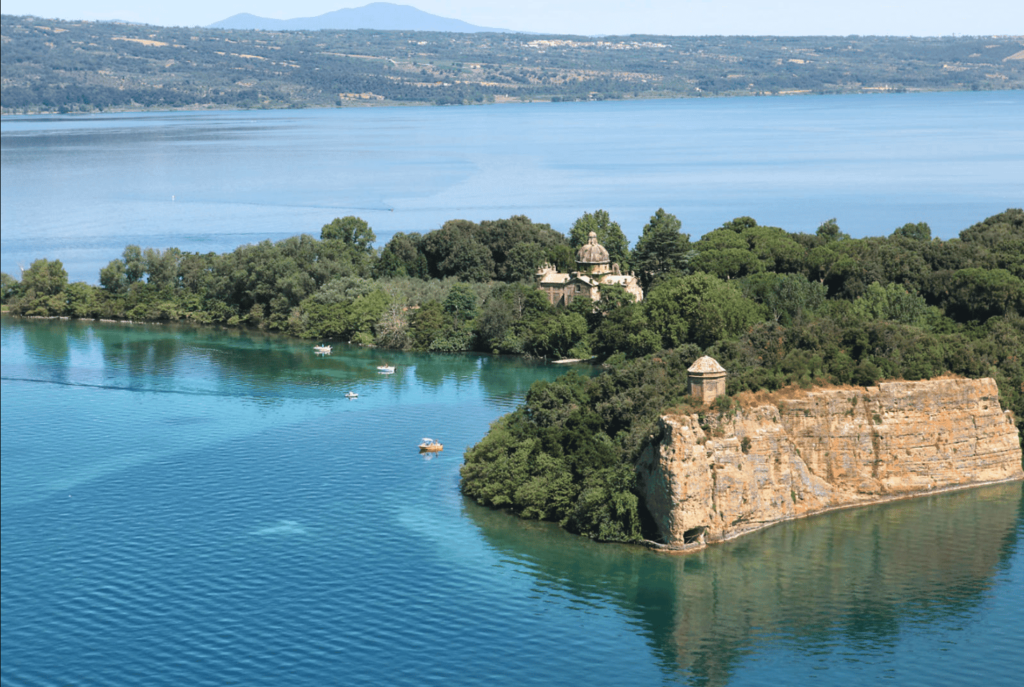
The largest volcanic lake in Europe, Bolsena, located north of Rome and formed in a caldera left behind by a volcano that collapsed 370,000 years ago. The two islands in the lake, Bisentina and Martana, formed by later underwater eruptions, but the volcano has not active since 104 BC. When the Romans first noted activity. The lengthy beaches of the lake covered in soft black sand, which is a result of its volcanic origins.
Both locals and visitors drawn to the beaches and the area’s facilities for kayaking, canoeing, windsurfing, fishing, water skiing, paragliding, and sailing. Agritourism lodging options include campgrounds, B&Bs, and accommodations. At several locations around the lake, you can rent sailboats and canoes or go on a sailing excursion.
Birdwatchers love Bolsena, where they may see over a dozen different species that fish in the waterways and nest in the reeds along the shore. The largest island, Bisentina, is worth seeing because of its gardens, oak trees, and Cappella del Crocifisso, which houses murals from the fifth century. Bisentina is reachable from Capodimonte by ferry.
9. Lake Bracciano:
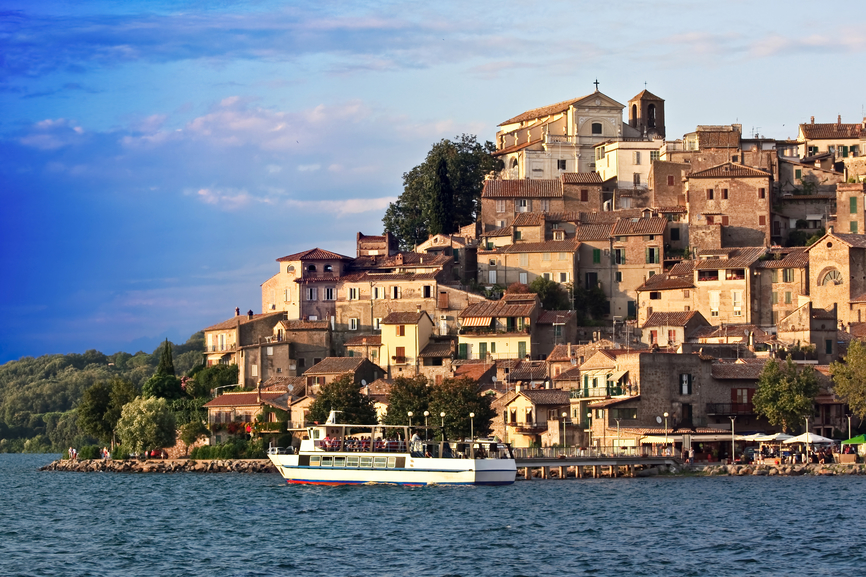
Situated just 32 kilometeres away from Rome, Lake Bracciano is one of the two lakes that originated from the same valcano’s crater. Since both lakes are a part of the Bracciano- Martignano Natural Park. The only motorized vessels allowed on either lake are public ferries and licensed fishing boats.
The other lake is smaller and nearly round. This makes swimming in the crystal-clear,clean water of Lake Bracciano as well as activities like kayaking, canoeing, sailing and scuba diving.
Situated atop a hill with a view of the lake, the town of Bracciano offers several attractions, such as the Renaissance Orsini-Odescalchi Castle, which has furnished rooms and a museum showcasing medieval armor and weapons. Explore the labyrinth of little alleys and stairways that descend to the lake as you stroll around the castle.
10. Lake Ledro:
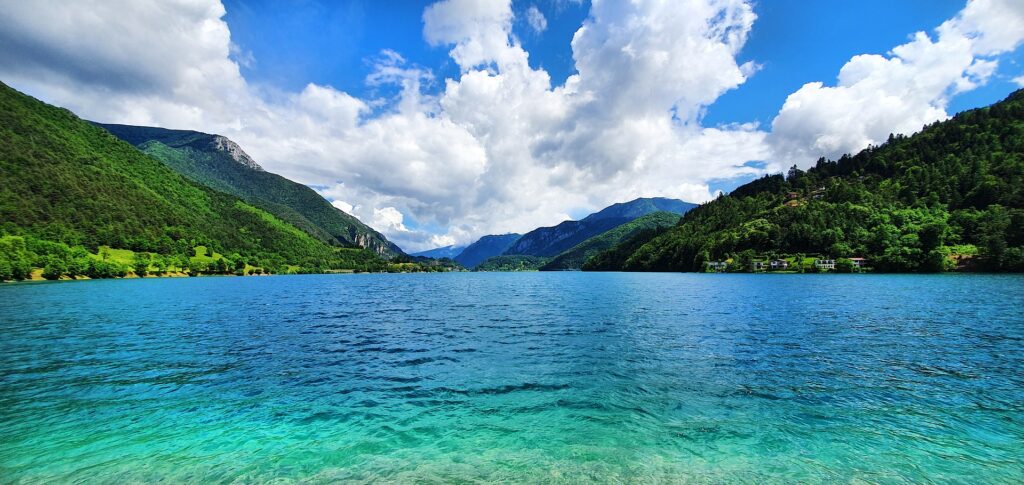
The tiny Alpine Lake Ledro is located at the northern extremity of Lake Garda, not far west of Riva del Garda, surrounded by virgin forests and mountain peaks. Swimming, canoeing, sailing, windsurfing, and fishing are all popular in the crystal-clear, nearly iridescent blue-green waters. A 200-kilometer network of hiking and walking routes circles the picturesque lake and leads to Alpine heights.
Another attraction of Lake Ledro is for history buffs. The Bronze Age pile buildings of a village were exposed in 1929 when the lake level dropped during the construction of a hydroelectric station at Riva del Garda. Apart from the houses, other everyday objects were discovered and conserved.
The dwelling arfe furnished with Bronze Age Artiacts and the village has been rebuilt. The most significant pile-dwelling site in Europe is the Museo delle Palafitte di Ledro , located near Molina di Ledro and it recognized as a UNIESCO World Heritage site. Family-fiendly events and workshops make this a well-liked location.
Also Read: Best Places to Visit in Italy
11. Lago Blu:
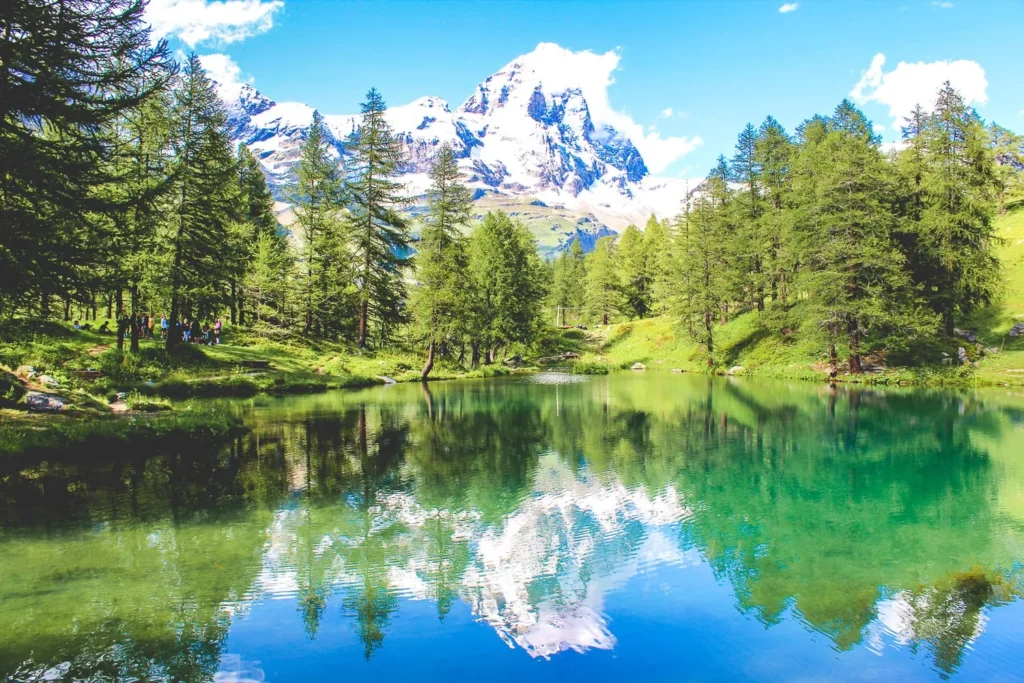
Without adding the iconic view across little Lago Blu, in the Val d’Aosta area, no list of lakes in Italy would be complete. Adjacent to the route that connects Valtournenche with Breuil Cervinia, a ski resort town, Lago Blu’s glassy surface appears to have been designed as a mirror for Cervinia’s stunning Matterhorn on its southern face.
The lake, fed by springs and beautifully clean, is ideally situated to offer the greatest view of the Matterhorn, whose characteristic peak rises directly ahead, framed by larch forests. Enjoy one of the best vistas in all of Europe with a packed lunch and make use of the picnic benches.
12. Lake Alleghe,Italy:
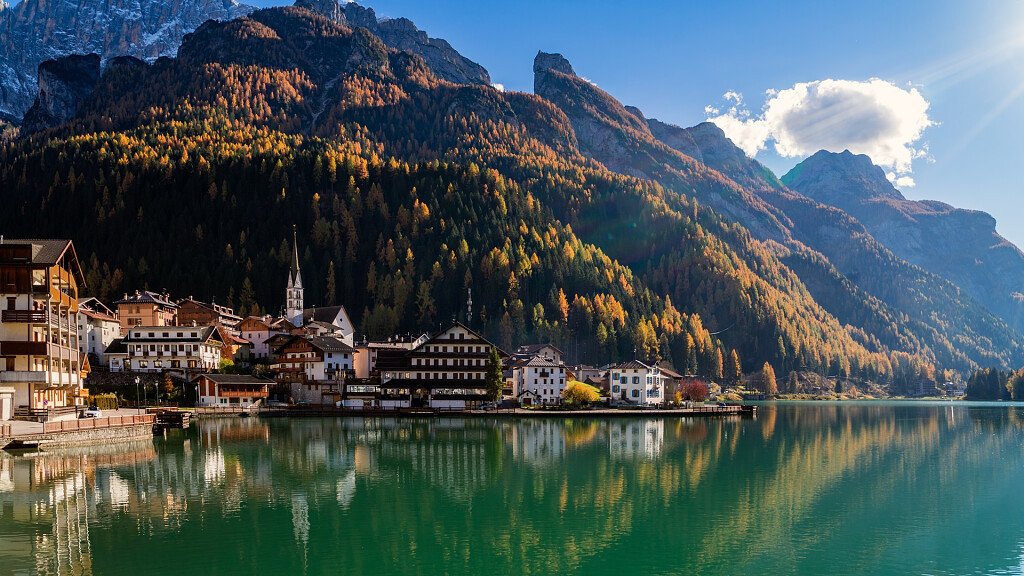
Deep in the Dolomites in northern Italy, the settlement of Alleghe. And Monte Civetta are reflected in the stunning green waters of Lago di Alleghe. The most popular activities in addition to swimming include sailing, windsurfing, and fishing. In Alleghe, you may also rent a pedalo. One end of the lake is converted into an ice arena during the winter.
There is a smoothed-out walking path around the lake, and there are amazing views from every location along the beach. Take the funicular up to the high Alpine meadows above for more views of the mountains.
The terrible history of this lovely town and lake dates to 1771. When a large landslide stopped a mountain stream and destroyed three settlements, creating the lake. The Alpine Lake that visitors enjoy today formed when the valley filled with water.
13. Lake Vico,Italy:
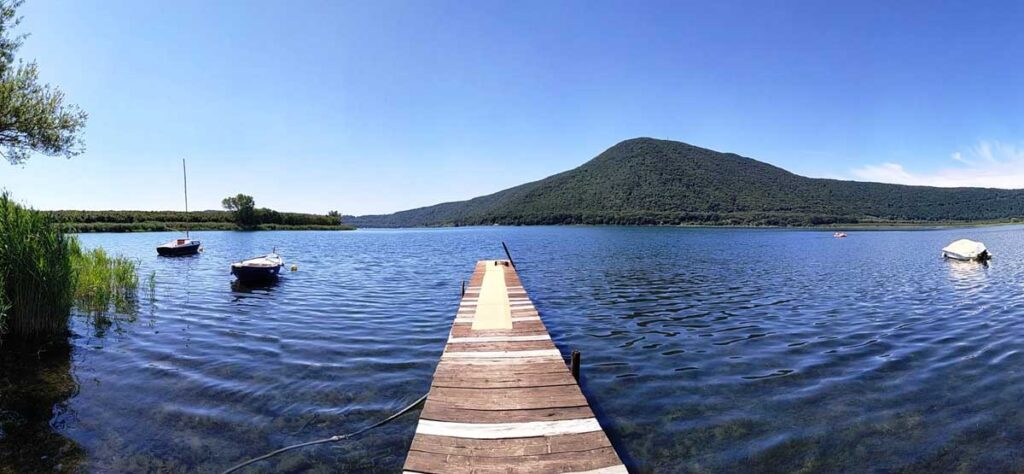
Lake Vico, which covers an ancient volcano’s crater close to Viterbo. And easily accessible from Rome, has a nature reserve protecting its northern coast. A portion of the southernmost beech forests in Europe cling to the hillsides of the nearby Cimini Hills. A range of mountains that rise to a height of almost 1,000 meters. At 510 meters, the lake is among the highest in Italy.
The forests are listed as part of the UNESCO World Heritage list of Primeval Forests of Carpathian Beech. Where some of the trees can grow up to 40 meters in height.
Despite being just little longer than an hour away from Rome, the beaches and coastline there are serene and uninhabited. The lake is famous for sailing and fishing, and swimming in its deep, clear waters is permitted; motorized boats are not permitted. Along the southern edge of the lake are picnic tables, benches, and a few eateries. On the northern shore is the La Bella Venere hotel, a beach resort with family-sized rooms and kid-friendly amenities that faces the lake.
Click here to know more.
For more information, visit our website Travel India Info for your upcoming trips or mail us at info@travelindiainfo.com. We will be happy to assist you. Happy Travelling!!!
Recent Posts
Europe Travel Guide: Best Places to Visit & Explore
15 Best Amazing Places to Explore in Scotland
9 Best Amazing Day Trip To Explore from Kyoto
